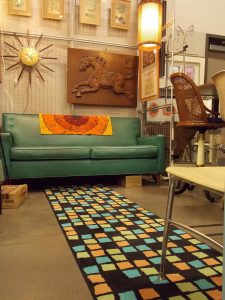 For better or worse, one thing that defines me is my love of antiques and collectibles. For forty years I’ve spent time nearly every week looking for and discovering relics of design and creativity that help me in my understanding and appreciation of our world. I have favorite places and events that I frequent consistently that help to fuel my passion. At the top of the list is the 20th Century Cincinnati show and sale that arrives at the Sharonville convention center on February 24th and 25th this year.
For better or worse, one thing that defines me is my love of antiques and collectibles. For forty years I’ve spent time nearly every week looking for and discovering relics of design and creativity that help me in my understanding and appreciation of our world. I have favorite places and events that I frequent consistently that help to fuel my passion. At the top of the list is the 20th Century Cincinnati show and sale that arrives at the Sharonville convention center on February 24th and 25th this year.
Top five reasons why the 20th Century Cincinnati is the coup de grâce for collectors.
- The show is visually stimulating and has a wide variety of items from the Modernism era including artwork, furniture, accessories, lighting, jewelry, clothing, glassware and pottery.
- There are unique and one-of-a-kind items that I covet and am able add to my collection.
- All the dealers are knowledgeable professionals so the amount of quality merchandise is always overwhelming with much of it reasonably priced.
- This loose knit, offbeat collection of buyers and sellers are the coolest people on the planet. You have to be there to experience the vibe of the room and to listen to the shared excitement about this era to understand the dynamic.
- The show acts as a time machine that takes me back to the era I was born into. The 60’s were a time of rebellion and exploration for our culture. The items produced in that era define the mindset of that time
Details about the show
There are 70 regional and national dealers at the show and they display many 20th century’s signature 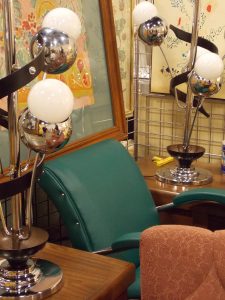 designers and artists. The term mid-century is used as a catch phrase for a variety of styles. It can encompass Art Deco, Contemporary, Machine Age, Modern and Pop Art era objects, which will be well represented at the show.
designers and artists. The term mid-century is used as a catch phrase for a variety of styles. It can encompass Art Deco, Contemporary, Machine Age, Modern and Pop Art era objects, which will be well represented at the show.
Every year the show features an in-depth display of a product or artist from the era. This year’s feature is from the Blenko Glass Company. The company will present the exhibit “American Handcraft in the Modern Age.” The display will include historical artifacts, a display of vintage works, and contemporary creations for sale. Although the company had been creating hand blown glass since 1893, it is the mid-century period examples that have become a staple in the homes of vintage modern collectors.
For the serious collector
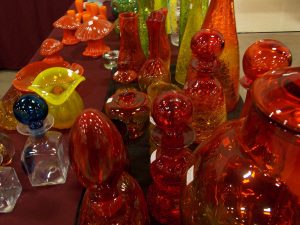 An exclusive two-hour Java Preview will kickoff 20th Century Cincinnati activities at 9 a.m. Saturday. Advance tickets are $25 and may be acquired online, by phone, or mail. Preview tickets will also be available at the door Saturday morning for $30. The tickets include early shopping 9 -11 a.m., complimentary coffee/juice bar, and a full-weekend pass.
An exclusive two-hour Java Preview will kickoff 20th Century Cincinnati activities at 9 a.m. Saturday. Advance tickets are $25 and may be acquired online, by phone, or mail. Preview tickets will also be available at the door Saturday morning for $30. The tickets include early shopping 9 -11 a.m., complimentary coffee/juice bar, and a full-weekend pass.
Show hours are 11 a.m. to 5 p.m. both days. Adult admission is $8. Passes are good for both days. The Sharonville Convention Center is located at 11355 Chester Road just off I-75 at the Sharon Road exit (exit #15).

Finally, for more information, visit
www.20thcenturycincinnati.com or call 513-738-7256
]]>
Every year around this time I am reminded that one of my favorite places to be happy is the 20th Century Cincinnati Show. It has become the largest Modernism show in the Midwest with more than 70 dealers from a dozen states. The show covers every inch of the 20,000 square feet in the Sharonville Convention Center. This year’s show is on February 25 and 26.
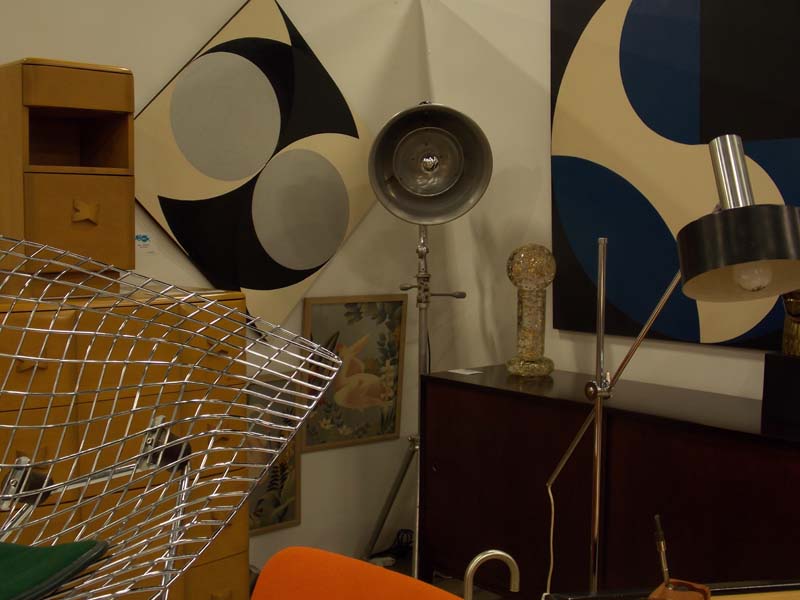
I’ve attended hundreds of antique and collectible shows across the country. Some shows have a personality and a presence about them. The best shows feel like living entities because they are packed with artful creations from some of the most creative minds on the planet. This 20th Century show stands out because of the quality and volume of merchandise. The vast array of products is complemented by the knowledge of the elite group of dealers at the show who know their wares. Here is a list of the participating dealers: http://20thcenturycincinnati.com/dealers/
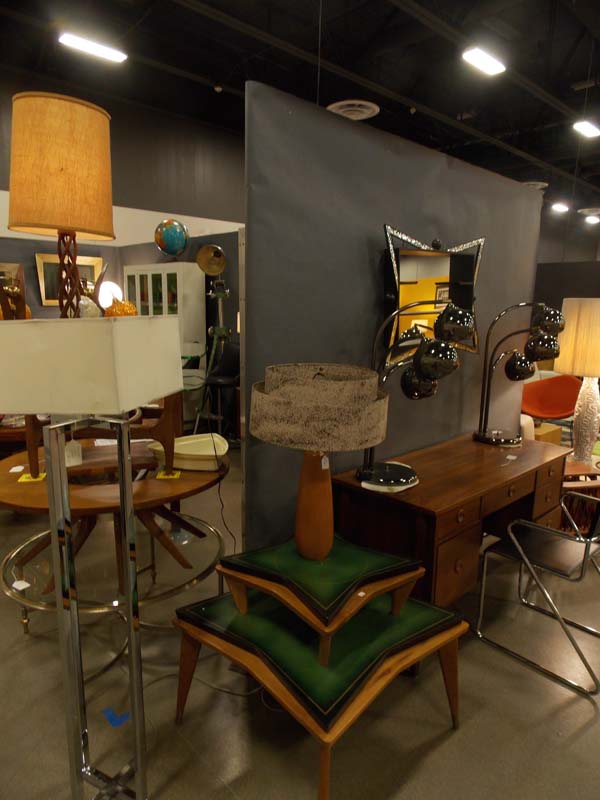
A rebellion of culture and design
The 50s and 60s were a renaissance period for architecture and design. The turmoil and uncertainty of the time forged a culture of individuals who challenged traditional thinking. The art and design community of the time questioned how we lived and the products we possessed and then inspired one another to depart from tradition and take a radical turn. The inventiveness of that time still inspires and may be more appreciated today than in the time it was birthed.
By the early 60s, modern art covered the walls in most homes. There was a new manufacturing approach in furniture and accessories of the period too, with straight-line designs and new age materials brought on by space age technology. Music and literature took a radical turn as well with looser structure and free form expression. Soft and gentle became loud and hard. A new era of style and design was born and it still thrives today among enthusiasts who embrace the passion and inventiveness of a time that is now described as the Modernism era.
The 20th Century Cincinnati show features a wide range of Modern products which also broadly encompasses the Arts and Crafts, Mid-Century, Art Deco and Post Modern periods among others.
Experienced and novice collectors who attend find products that meet their fancy from the ultimately rare and unusual, to the affordable, mass produced items from their childhood. Show attendees are consistently impressed by the broad selection of vintage furniture, lighting, artwork and pottery according to show director Bruce Metzger.
“This show specializes in furniture and accessories that are ready to go from the floor of the convention center directly into your home,” Metzger says.
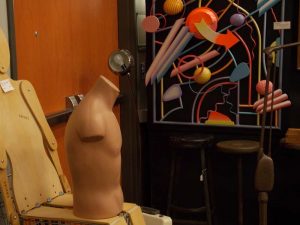
While the dealers at the show remain consistent from year to year, Metzger was pleased to announce that one of the areas largest dealers in Mid Century products, Flower Child, (with stores in Columbus and Cleveland) will be displaying for the first time at this year’s show.
Another stand out category of merchandise will be a large representation of vintage clothing and jewelry from Kimberly Klosterman, The Gilded Lily, Somewhere in Time, Bel-Air Jewelry and other dealers who specialize in fashion and accessories from the era.
Every year the show offers a special exhibit that takes a deeper look at products and design from the Modernism era. This year’s exhibit features some architectural details of six iconic “drafted and crafted” Mid Century Modern homes in Cincinnati.
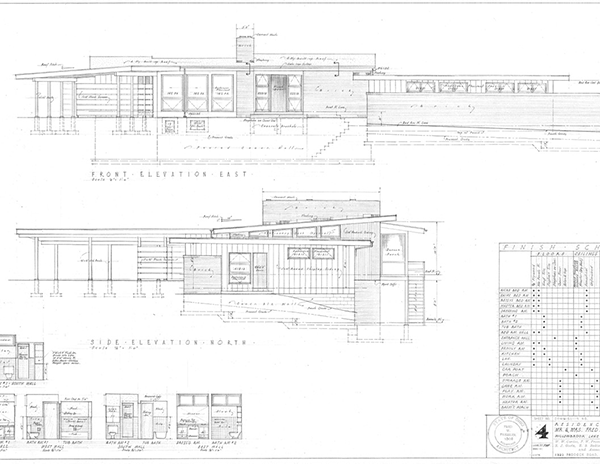
Cincinnati’s non-profit modern design forum cf3 is presenting the exhibit which will feature representations of hand-drawn blueprints, plans and drawings of the homes. The digitized original drawings invite the viewer to consider similarities in the design process irrespective of an architect’s means of documentation and expression. The drawings will be supplemented by both period and contemporary photographs, as well as other related ephemera.
Weekend activities begin with a two-hour Java Preview beginning at 9:00 a.m. Saturday. Preview tickets admit patrons to the exclusive shopping period (complete with a complimentary coffee, tea and juice bar) and include a full-weekend pass. Preview ticket ordering information is on the website: http://20thcenturycincinnati.com/java-preview/
Regular show hours on Saturday and Sunday are from 11:00 a.m. to 5:00 p.m. The $8 adult admission is good for both days.
The Sharonville Convention Center is located at 11355 Chester Road just off I-75 at the Sharon Road exit (exit #15). Parking is free and all areas of the facility are wheelchair accessible.
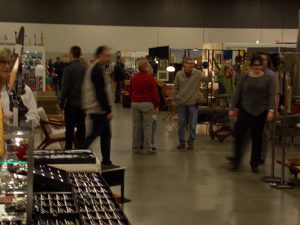

Yet other days, the sky filled with rich blue, sunshine and rainbows. We retained a shrouded, foggy recollection of our Irish experiences. Who can say whether our memories were clouded by weather, whiskey or the magic of that island? From these misty moments, we collected our cle
arest thoughts, bits that we could hold at a distance of a few months time. Ireland gave us these rich memories, with dialogue in soft brogue, rolling hills and old stone, woolen socks and beautiful landscapes.
Chasing rainbows in the West of Ireland
It seemed too magical: To arrive sleep-deprived, plane-stale, and suddenly be driving down winding roads with rainbows at every curve. But they lingered for hours. It would rain occasionally, and the skies would clear enough to let some sun shine through. Again, another rainbow.
The morning we arrived in Ireland, we set off for the multi-hour drive from the Shannon airport to our destination: Clifden, a small town on the western coast. Every few minutes, it seemed, we’d turn around a bend in the road or crest a hill to find a rainbow.
I snapped photos from inside the car, most of them polluted by road signs and poor camera angles. We spotted a double rainbow that we couldn’t quite catch in a digital image. I couldn’t help but think of these natural light phenomena as a friendly greeting as we arrived for a vacation in Ireland.
It was a tease, or perhaps some Irish humor at the start of the trip. I didn’t see one again for the remainder of the week.
—Suzanne Clark

The language of tradition
I went to Ireland with my Irish Catholic mother, having promised her that we would make the trip together. It was her first time outside the United States, which meant I was our chauffeur and tour guide. This included navigating rotary intersections (roundabouts) and winding cliff-side roads as my mom tried to avert panic from the passenger seat. It also meant I regularly responded to questions such as, “Do you think they take American dollars here?” and “Well, why don’t they do it our way? Our way is better.”
But there was one place where her understanding of Ireland and Irish people was deeper than anything I, as our guide, knew: the church. Raised by Irish parents and in Catholic schools, my mom knew exactly what to do when she walked into that first Irish church at the end of our street in Clifden. She went directly to the prayer candles and lit one “for Grandpa,” meaning her father and my grandfather, who had always wanted to visit Ireland. She knew to make the mandatory donation and to kneel before the Virgin Mary in prayer. She even knew the appropriate prayer to say, in Latin.
In this land, where religion played a major part in everyday life as well as politics, war and history, she found a piece of her own past. For as far away from home as my mom must have felt on that first journey abroad, she could speak the language of the church, uniting herself with her ancestry and traditions hundreds of years old.
—Katie Scarlett Brandt

“Will you take our picture on the sheep?” A girl in a bright pink jacket ran across the lawn to ask me. Another girl, maybe 2 years old and whom I assume was the little sister, struggled to keep up. We were in the garden of a castle called Kylemore Abbey, which an English tycoon had built in the 1860s as a token of love for his wife and later changed hands to a group of Benedictine nuns. “Please?” the girl said.
I agreed, and the girls raced onto a pair of sheep statues. After I snapped the photo, the older one asked to see it, exclaiming, “Look at Fern! Isn’t she so cute?” She was. And so were the sheep.
This was not the first
time I had snapped photos of sheep, though my previous shots had been of the live variety. Outside Galway on the drive in, I was distracted by the mass of fluffy white coats stretching across the green landscape. I almost missed the one directly in front of my car and only narrowly avoided running her over. The sheep seemed so coolly unimpressed by everything; they’re not visibly afraid of cars or people. They meandered along the lakes, down the roadside, and in the middle of the road. They were everywhere—some spray painted with streaks of blue, red, or yellow to denote ownership.
I couldn’t get enough of this creature so entrenched in Irish culture. There are actually far more sheep (8 million) than people (4.7 million) in the country. And because I couldn’t actually (legally) bring one home with me, I now own enough pairs of wool socks that I could wear a new pair everyday. For a week.
—KSB
The view from the top of Connemara
From the highest point of Connemara National Park, the wind was brutal. I had layered on a sweater, two jackets and a hat, and still felt battered. But after a one-and-a-half-hour hike upwards. I looked down at my sneakers, and the stones under my feet, then out across the sweep of landscape below me. I conquered this Irish hill. I felt triumphant.
One of only six national parks in Ireland, Connemara has a simple trail system that takes hikers up to a massive hill, rockier at the top but with stunning views. As you climb, you see more and more of the surrounding countryside, the edge of land and the beginning of the Irish Sea.
For a few minutes, my companions and I rested at the top before beginning our journey downward. One of us, a devotee of yoga, stretched into a side-plank on a pile of stones. But we could see the clouds rolling ever closer as we began our journey downward. We were rain-soaked when we reached the park building at the bottom, and the car smelled of wet wool on our drive back to Clifden.
—SC
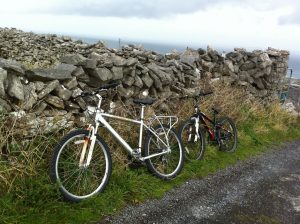
Riding bikes on the Aran Islands
The brakes on my bicycle were squishy, while the seat was hard. But the gently rolling roads ofInishmore, the largest of the Aran Islands, were perfect for refreshing my cycling skills. A 45-minute ferry ride across Galway Bay delivered us to the island, and I convinced my husband that biking, rather than carriage ride or tour bus, was the best way to see the island.
The beach road, which curved along the edge of the island, provided views of crashing waves, rough shores and livestock scattered among tiny plots of land divided by old stonewalls. Goats climbed freely, munching weeds sprouting between stones; cows, horses and sheep passively remained within their boundaries. These sights would have been a blur in a tour bus, but we could stop at leisure to laugh at the goats or snack on apples. Letting myself glide down a hill, I couldn’t deny the giddy feeling I had, with the salt-tinged breeze blowing, the views of old cottages and rugged landscapes softening with my speed.
After a few miles of pedaling, we parked our vehicles in a sea of other rental bicycles at the base of a hill and climbed on foot to the top of Dun Aengus, the remains of a prehistoric fortress perched on a cliff. I sat on the edge of an old rock foundation, legs dangling into nothingness, and watched the waves crashing below me. For a moment, I thought about what it might feel like to be one of those waves, slamming into the rock face that stretched from my legs to the water. Then I stood back up, descended the hill and climbed on top the hard bicycle seat for the return trip to the ferry.
—SC
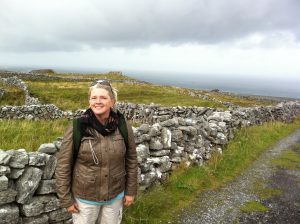
Irish Stonewalls and souvenirs
Having purchased enough wool socks to risk being charged as an importer by U.S. customs, I decided to bring back a different sort of souvenir: a rock from one of Ireland’s stonewalls. The walls serve as a backdrop throughout Ireland and as home to the animals and plants that settle in them—small birds, mammals and mosses. No matter how round or jagged, each stone contributes to the overall personality of its wall, bringing the entire structure to life.
Ireland boasts a quarter-million miles of these dry, handmade walls, most built after the Great Famine of the 1840s. On the island of Inishmore alone (winter population 900), 10,000 miles of walls divide the rocky terrain into square plots. Within those plots, people in centuries past created their own dirt for crops by using seaweed as a base. I spent my time on the island searching for just the right stone to carry home with me. I hunted in cemeteries, on roadsides and beaches. Finally, I found the perfect one, six inches across, on a wall surrounding a home in Inishmore’s main town, Kilronan. My mom photographed me using it to write a message in the sand to my boyfriend back home, and now it sits on our bookshelf, a piece of Ireland as unassuming and uniquely Irish as the wall from which it came.
—KSB

After an hour’s drive down a one-lane road that snaked around mountains and loughs, black bricks began dotting the rolling landscape: Peat, drying under overcast skies. Their mere presence felt eerie. Connemara is desolate enough that while driving its country roads, you see few houses and fewer people. The region’s isolation leads you to believe in the chance that no one has been in this exact spot before. These piles of peat prove that someone has. Someone dug this peat out of the bogland. And they will return to collect it.
Peat bogs makes up three percent of the earth’s land area, and under the right conditions, eventually turns to coal. In Ireland, which holds about 10 percent of Europe’s peatland, it’s used for fuel and to distill whisky. Walking down Clifden’s streets at dusk, I smelled the smoky-earth scent of peat burning every night. It signaled people settling in for the evening, chasing the chill from their homes with fires made from the hardened briquettes.
Now, as I pulled the car over and walked toward the drying peat, my feet sank into the ground with each step. For the first time in my life, I risked being literally “bogged down” in the damp earth below me. The peat was heavy, wet, and left dirt and grass between my fingers. As I turned a brick over in my hand, I wondered if one of the farmers would appear to chide me. Yet for as far as I could see in any direction, the only other living creatures in this remote landscape framed by mountains were the sheep.
—KSB

All my days in Ireland ended in a pub, a habit apparently true for more than just tourists. We would gather around a small wooden table or as close to a hearth as possible, chat with locals, and break down our days. Where we had gone and what we had seen changed daily, but one constant remained: glasses of whiskey on the table. Always three or four of them, always with a single ice cube at their centers, and always a promise of a smooth end to an intrepid day.
After a week of drinking whiskey, splitting my time between Jameson and Powers in countryside pubs, I took a trip to the Jameson Distillery in Dublin. Businessman John Jameson founded the distillery in 1780, under the motto “sine metu,” which means “without fear” and appears on every bottle. Today, the company sells more than 30 million bottles a year.
I was chosen with a handful of other people from my tour group to serve as “official whiskey taster.” It’s difficult to explain the sense of pride that overtook me, but as I sat down to my blind taste test, setting Jameson against Scotland’s Johnnie Walker and America’s Jack Daniels, my experiences of the past week flooded my thoughts. I took my time finishing the tiny shot glasses, casting my vote unknowingly for Jameson, and soaking in the sights of the distillery.
I wasn’t certain I’d ever be back again, or that whiskey would ever taste as it did in those pubs with their low ceilings and tiny tables. Even as I write this, I want to pour myself a glass, sit back, and imagine I’m back at the distillery—or at any one of the pubs in which I spent my nights in Ireland—warmed from the misty cold by drink, fire and fiddle.
—KSB

On our last full day in Clifden, I perched atop a bar stool, sipping an Irish coffee, and one of my companions carried over a Guinness. A shamrock etched in the foam atop the dark brew showed the work of a bartender with a quick hand. We admired the alcohol-based artwork and watched as rain dripped outside the windows of the Alcock and Brown Hotel. The afternoon’s entertainment was about to begin, and this felt like the quintessential way to celebrate being a writer in Ireland.
For the next hour, I sat rapt as poets read their work. Even the names of the poets there had a poetic English-Irish ring: James Harpur and Gerard Smyth, Mary O’Malley and Eugene O’Connell. The event was a hundredth birthday memorial for poet Czeslaw Milosz, as well as the launch of theCork Literary Review. It was one of the final acts of the Clifden Arts Week, an annual celebration of painting, music, literature and other creative arts. Toward the end of the session, a man played a short interlude on fiddle, another treat before leaving the warmth of the bar to walk to our temporary home.
Afterward, I looked up poems by Czeslaw Milosz, and these words lingered with me, from his poem “Ars Poetica.”
The purpose of poetry is to remind us
how difficult it is to remain just one person,
for our house is open, there are no keys in the doors,
and invisible guests come in and out at will.
What I’m saying here is not, I agree, poetry,
as poems should be written rarely and reluctantly,
under unbearable duress and only with the hope
that good spirits, not evil ones, choose us for their instrument.
—SC
]]>Whether you consider yourself a country mouse yearning for an exciting weekend or a city mouse trying to relax, Ann Arbor is an ideal destination. Surrounded by towering trees and home to the University of Michigan, the city boasts exceptional cuisine, art and history. It is a friendly, conscientious and walkable city—the perfect mix of small-town casual and big-city flair. Spend a quiet afternoon at the park, or shop the stores along Main Street packed with local goods. There are live music venues and a constant rotation of university events, enabling you to be as exploratory or reclusive as you want.
First, though, you have to get here. Located directly off I-94 at the eastern edge of Michigan, Ann Arbor is about an hour southwest of Detroit. Positive visited some of the city’s sights; here’s a roundup of favorites.
 Taste of Michigan: Breakfast at the Farmers Market
Taste of Michigan: Breakfast at the Farmers Market
In Ann Arbor’s historic Kerrytown District a few blocks from downtown, farmers from throughout the state fill the weekly Ann Arbor Farmers Market with the freshest fruits and vegetables, herbs and flowers in an array of colors. By 8am on Saturday, dozens of people fill the aisles, perusing the organic, locally grown produce. A quick breakfast of fresh berries and bread still hot from the oven enables you to support the local economy and get a true taste of Michigan.
“Thanks for stopping by,” says Jeff Carpenter of Carpenter’s Organic Produce, as he fills a bag full of red and yellow tomatoes. Carpenter tells me that he started coming to the market as a child with his father Dwight and grandfather George, who are standing on either side of him helping customers.
Now in his 20s, a green baseball hat covers Carpenter’s head and a pair of headphones wraps around his neck. The three generations of his family continue to make the 75-mile drive from Allen, MI, every week to sell the goods from their farm.
In a state where one in 10 people struggles with food poverty, farmers markets and the farmers who supply them offer a valuable—and health-conscious—resource. This includes the Ann Arbor market, now in its 92nd year. “No farmers, no food, right?” Carpenter says, pointing to a bumper sticker of the same quote posted behind him. “This is not only an opportunity for us to put bread and butter on the table. We feed the community.”
Enlightened shopping: Robot Supply & Repair and the Cherry Republic
The Farmers Market isn’t the only way you can get a true taste of Ann Arbor, however. After breakfast, walk the half-mile over to one of the most unique shops in town: Liberty Street Robot Supply and Repair, 115 E. Liberty St.
Here, there are all the cogs, gears, and springs you could need, as well as humanoid parts. Author and publisher Dave Eggers (known for his first book, “A Heartbreaking Work of Staggering Genius,” and his publishing company, operating under the name McSweeney’s), has set up the Michigan branch of his national writing and tutoring center behind the robot storefront. 826 Michigan offers after-school tutoring and writing workshops to the children of Ann Arbor, from grade school through high school. Like all eight of the 826 programs across the country, Michigan’s is fronted by a unique, volunteer-run store where you can also get inside the minds of the program’s participants by reading (and purchasing) compilations produced by the children, with all proceeds going to fund the 826 tutoring program.
 Around the corner at 223 Main St., the smell of cherries wafts from the door of Cherry Republic. From barbecue rubs and sodas to salsas and sweets, the shop features more than 170 cherry products derived from Michigan cherries. Walking the rows is an educational experience too, with facts about Michigan’s cherry crop hanging in frames. For example, the United States produces 650 million pounds of cherries each year, most of which grow in Michigan and the Pacific Northwest.
Around the corner at 223 Main St., the smell of cherries wafts from the door of Cherry Republic. From barbecue rubs and sodas to salsas and sweets, the shop features more than 170 cherry products derived from Michigan cherries. Walking the rows is an educational experience too, with facts about Michigan’s cherry crop hanging in frames. For example, the United States produces 650 million pounds of cherries each year, most of which grow in Michigan and the Pacific Northwest.
Store manager Keri Hardy tells me that in order to protect that cherry crop, “We take a one percent donation from every purchase in Ann Arbor and give it to local farmers who need help.” Those donations protect the store’s future, too, helping to ensure plenty of delicious samples for every visitor.
A tiny hunt: spotting the wee fairy doors
From inside Cherry Republic, you may have glimpsed one of Ann Arbor’s most intriguing quirks: a fairy door. Most of these tiny, painted doors are less than six inches high and sit at street level so that they reach to just above your ankle. Yet despite their small height, the doors have hijacked an entire city’s imagination. Many appear on the outsides of buildings, including one visible through Cherry Republic’s windows overlooking Liberty Street. The morning I was there, a mother had brought her two young daughters to see the door. Dressed in tutus and holding wands, the girls posed for a photo in front of the door, and then spun around to leave gifts for the fairies—miniature drawings and rings on the front stoop.
The idea for the doors came from the mind of illustrator Jonathan Wright, who added a fairy door to his own house in 1993. It seemed fitting for the preschool his wife ran out of their home. Now the doors have spread to businesses throughout Ann Arbor—including inside the library and Google’s regional offices.
Throughout the city, there are approximately 20 fairy doors and an entire fairy village tucked away near the library. Follow this map to hunt them all down—or at least some of them on your way to lunch..jpg)
Lunch at Zingerman’s Delicatessen
Based on everything I have come to learn about Ann Arbor and every recommendation I heard during my time there, you do not want to miss Zingerman’s Deli, 422 Detroit St. My friends told me this. Managers at stores told me this. Servers at other restaurants told me this. In short: Zingerman’s is an Ann Arbor institution, serving delicious specialty foods and traditional Jewish dishes since 1982.
I, however, was too hungry to wait. Arriving at the deli at prime lunch hour (noon), I met a line that wrapped around the building and down the street. Consider this fair warning and plan either an early or a late lunch at Zingerman’s. Or you could run across the street to the farmers market and grab an apple to snack on while you wait.
Impromptu tag: A speedy tour of the Wave Field
After lunch, not only will you have energy to burn off, but it will also be due time to check out the campus of the University of Michigan—the state’s oldest university, founded in 1817 when Michigan was still a territory. Outside the François-Xavier Bagnoud building for aerospace engineering, 1320 Beal Ave., eight rows of 50 rolling grass waves fill the landscape, nestled between buildings.
Though subtle, those waves are no accident. Sculptor and landscape-artist Maya Lin designed the waves in 1995, reminiscent of an ocean set in the middle of the landlocked Midwest. People come here for study dates, melting into the curves of the waves, or they come to picnic, perched upon the crests. The waves convey a peacefulness, as if all the separate entities—the women giggling through their homework, the family pointing out clouds together—are part of a whispered secret.
That is why it made complete sense when a group of people relaxing on one end of the 10,000-square-foot field rallied everyone present for an impromptu game of tag. It was late in the afternoon as we leapt and ran over the waves. The game lasted no more than 15 minutes, but we felt a part of something different and beyond ourselves, as if there really were an ocean in the middle of Ann Arbor.
Street smarts: downtown street fairs
Time to get back to Main Street, where virtually every weekend night during the summer, some sort of festival fills the street. The night of the Mayor’s Green Fair, I stop at booths on clean water and land conservancy, sample food from a truck with a garden as its bed, and chat with bikers galore.
Michael Firn is one of those bikers. Part owner of Sic Transit Cycles, 1033 Broadway, Ave., he stands at the edge of the street, repeatedly folding and unfolding a Brompton bicycle. He reduces it to the height and width of a suitcase before popping it back open and riding in a circle. “I call it a bike that folds, not a folding bike,” he says. “This is the next generation of personal transportation. Space, theft, the elements—at the end of the day you can put it in your closet or the trunk of your car.”
Firn alludes to the urbanization of America, with most people now living in cities where space is limited and crime ever-present. And while there remains plenty of room in Ann Arbor for full-size bikes, the fact that there is a demand for Brompton here— that people can imagine fitting it into their lives—is a prime example of how this modest, Midwestern town keeps a steady eye on the future.
that people can imagine fitting it into their lives—is a prime example of how this modest, Midwestern town keeps a steady eye on the future.
Viewing pleasure: late night movie at the Michigan Theatre
Finally, the sun has set. Vendors at the fair along Main Street close up shop, and the town—except for the bars—begins to settle. So why not relax with a movie? The historic Michigan Theater, 603 E. Liberty St., shows independent and classic films, and plays host to the Ann Arbor Film Festival. The Historic Auditorium room, built during the silent film era, has 1,700 seats. It also houses one of the only remaining theater pipe organs still played in its original setting. So grab a bag of popcorn, sprinkle it with real butter, sit back and enjoy the show.
Ann Arbor will still be here tomorrow. Its residents have made sure of that.
]]>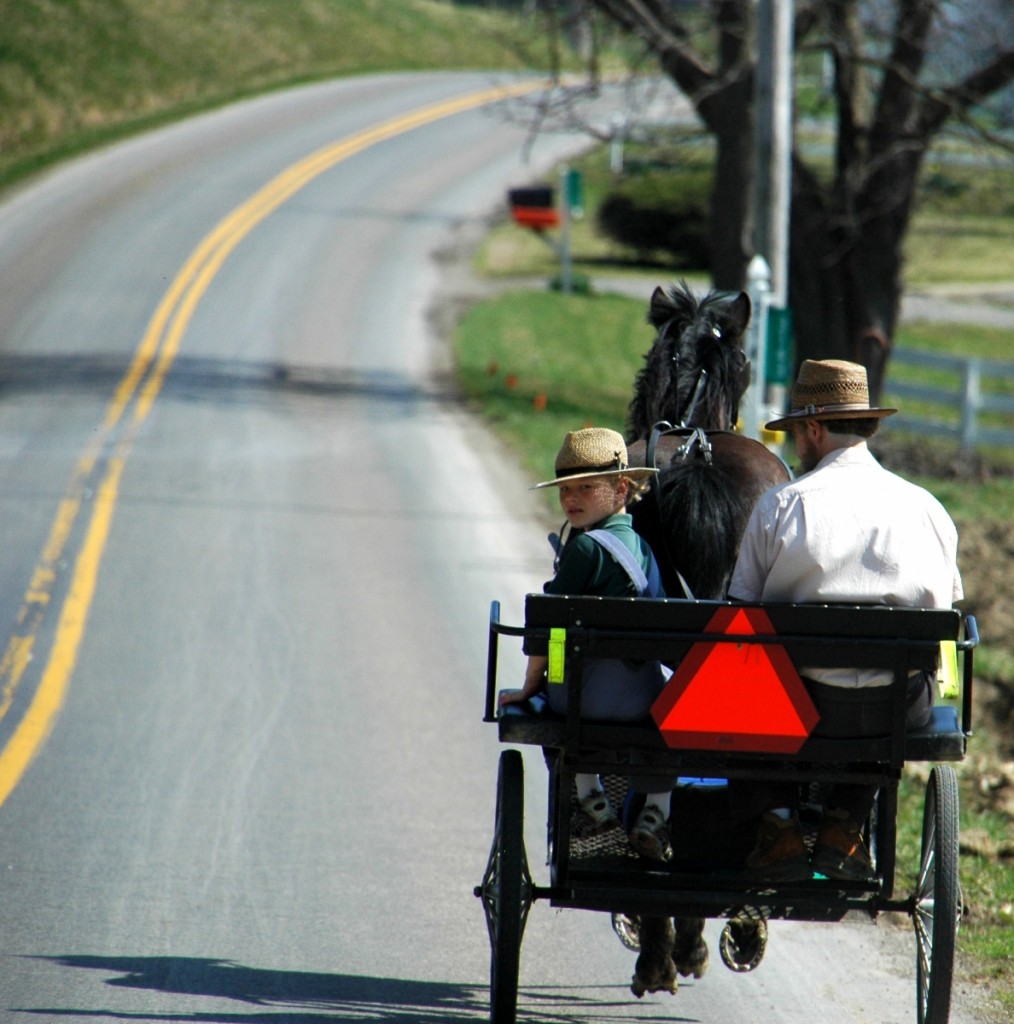
My senses begin to align, and I realize the clicking is actually the sound of horseshoes on pavement and Amish buggies outside. The smell of baked goods is the made-from-scratch blueberry pancakes cooked by Mennonite women in the kitchen of my bed-and-breakfast. It might be the most peaceful awakening I have ever experienced.
The Miller Haus Bed & Breakfast in Holmes County, Ohio, is my home base for exploring the back roads of Amish country. I will head out for the day along the winding rural roads where mile-markers are replaced by Yoder’s Cheese signs and laundry drying on the line. The miles will uncover a simpler life that still exists, hidden treasures unearthed if we take the time to look for them and non-tangible life nourishment that feeds the soul.
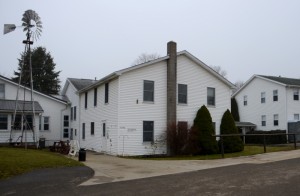 Simpler Life
Simpler Life
Hidden throughout Indiana, Ohio, Pennsylvania, Delaware and New York, miles of tangled back roads lead to the country’s Amish communities. The families who live along these roads are untouched by the technological world that most of us cannot live without.
After leaving the Miller Haus for the morning, I drive onto County Road 135 in Millersburg, Ohio, to see where the day leads me. A montage of unfamiliar yet peaceful imagery blurs by me: horses grazing in the pasture; chickens pecking at feed on dirt driveways; Amish men and boys plowing the fields and Amish women picking fruit from the orchards. Driving with the top down on my convertible, I feel as if I’m a visitor to a P. Buckley Moss painting that has come to life.
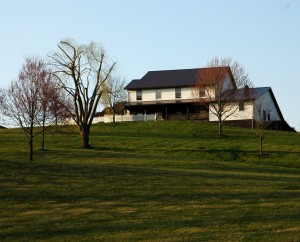
An Amish buggy on the road slows me down to 20 mph. I start to feel anxious, forgetting that I have no reason to be. I have no agenda and no definitive destination. The buggy is a literal reminder I need to slow down in my life.
On these small county roads, the only stores I see are cheese factories and wood mills where everything is done by hand. Breakfast staples come from local markets where berries are picked fresh and eggs are collected each morning. Here, hard work still matters and there is a personal touch to all facets of life.
Hidden Treasures
When I slow down long enough to enjoy my surroundings, I start to notice the little treasures that make up the larger scene. It’s like looking at an impressionist painting: You see the image, but only when you get close enough to the art can you see and appreciate all of the little dots and colors that make it a masterpiece.
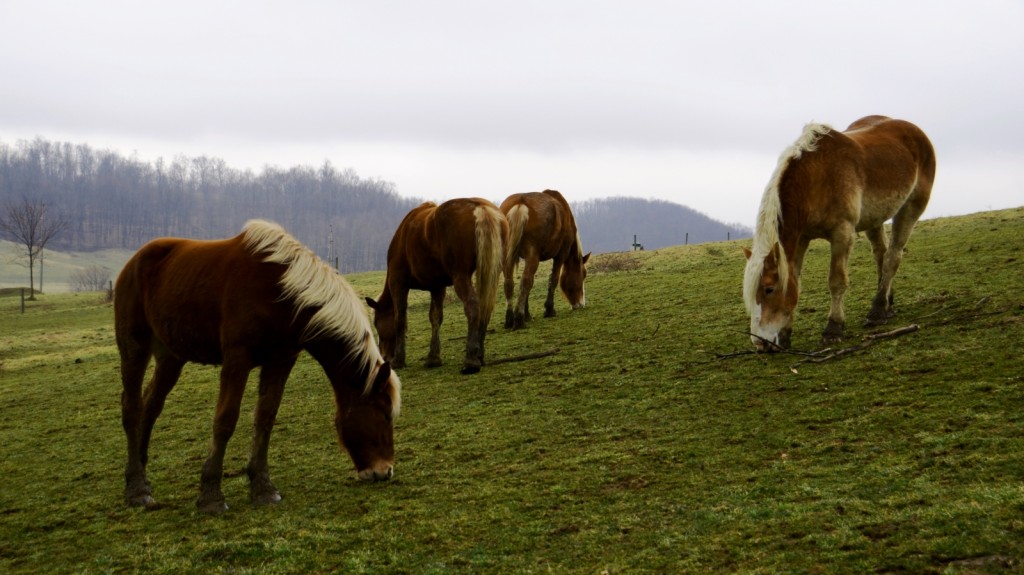
In Farmerstown, I make my way to County Road 114. I’m looking for “the blind broom maker” as the locals know him, and his small shop called Farmerstown Broom and Book. I knew it from a previous visit to the area when I met a very humble Amish woman and her legally blind husband who spent his days making brooms by hand in the shop at their home. They told me about the hours it takes to make the many sizes of brooms and their passion for creating durable high-quality products one at a time.
I remembered a small garage-turned-store where the only available light came from one tiny window. In one corner were completed brooms, hand-controlled equipment and piles of straw. Another area housed metal bookracks with children’s books on manners, cookbooks, spiritual books and religious daily devotionals. Natural ointments for burns and oils used for sleep aids were by the door.
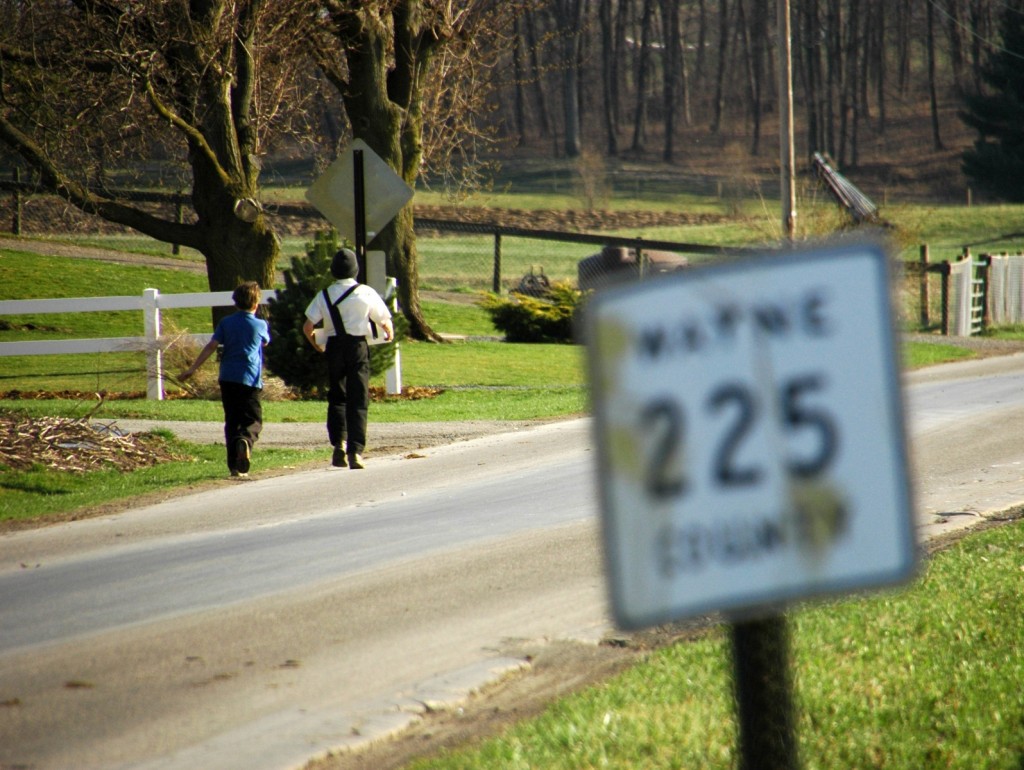
In the last corner of the room a frail woman sat wearing a plain dress held together by safety pins. I remember buying my broom and bee sting salve and getting on my way.
That brief visit with the blind broom maker and his wife made an impression on me. I wanted to find them again.
When I found the shop, everything looked exactly the same, down to the frail Amish woman sitting in front of a metal cash box. But one thing had changed: A few months earlier, the blind broom maker had died from cancer.
The few brooms in the corner were all that his wife had left of his handiwork to sell. The broom I purchased previously suddenly became a sentimental token of a shared moment I will never forget.
The true treasures of the back roads of Amish country are places like this that are found by mere chance or by word of mouth from the locals. The owner of my bed and breakfast, Lee Ann Miller, told me about another place called Yoder’s Bargain Store in Fredericksburg, Ohio. It is a shop used by locals and run by an Amish family.
The small gray stone at the end of Yoder’s long, winding driveway features white hand-painted letters in an understated display welcoming guests, but not advertising for them.
I feel almost intrusive driving up the unpaved farm entrance to the store. A horse and buggy is tied to a post outside. I park my convertible next to it, feeling the awkward juxtaposition of the two modes of transportation.
The dark, two-story shop is illuminated by a small amount of outside light, although some oil lamps are affixed to pillars. The room is silent. I quietly peruse tight aisles of glassware, trinkets, Amish work attire and cooking gadgets priced at a steal. My small basket was loaded with fruit dishes for less than $1, kitchen utensils and some very hearty wool hats and gloves.
The elderly Amish woman at the checkout added my items with a calculator. For less than $50 I had a stash of things that would’ve easily cost me $150 elsewhere. Conditioned for convenience, I almost presented my credit card before remembering that here, they sell and acquire goods the old fashioned way – with cash. Yoder’s Bargain Store was never designed to be a tourist stop, which is why so few know about it and why it is such a gem to find.
Self-discovery
The slower pace from point-A to point-B in Amish country is therapeutic. The reduced speedometer reading reminds me to notice things like the rolling countryside, windmills, hard labor in the fields and handmade baskets for sale on the side of the road. As I log miles on tight turns on seemingly endless county roads to nowhere, it all begins to equate for me.
I remember that living in the moment is something we choose. We make decisions about whether or not to notice flowering trees, a mother horse with her foal and the smell of fresh biscuits. There’s a sense of gratitude in the air, for family and relationships and things that are authentic.
To stop for a moment – for a day – for a weekend is to nourish the soul. A break in the churning of emails, appointments and deadlines is worthwhile, healthy and essential.
As darkness falls for the day, I draw the shades and rest my head while the country stars watch over me until morning. I can’t wait to see where tomorrow’s roads lead me.
All photos by Anietra Hamper. An award-winning writer based in the Midwest, Hamper is a frequent contributor to Positive365. Her previous features include a misty trip to Loch Ness, a journey of self-discovery in Southeast Asia, and a profile of a family whose home is bursting with love.
]]>As I ascended the brow of the hill from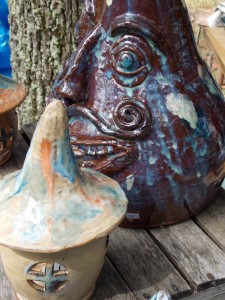 the hayfield parking lot, I suspected I was in for a weird walk in the woods. I soon realized it would be wonderful, too. The winding gravel path was lined with white canopies shading artisans, perched for as far as I could see. The Berea Craft Festival made good on its promise of offering the Midwest’s best artists, craftsman and entertainment.
the hayfield parking lot, I suspected I was in for a weird walk in the woods. I soon realized it would be wonderful, too. The winding gravel path was lined with white canopies shading artisans, perched for as far as I could see. The Berea Craft Festival made good on its promise of offering the Midwest’s best artists, craftsman and entertainment.
A history of delivering unique one-of-a-kind art that’s made in the shade
The Berea Craft Festival has a name that betrays the depth of the event. It certainly has an element of crafts, and it is festive, but it offers much more artistic depth than events of this ilk. It has been at the heart of Kentucky’s art community for more than 30 years because of the caliber of the artists and its unorthodox location in the middle of the woods in Central Kentucky. The festival celebrates its 32nd year on July 12-14.
Now she’s basket crazy
The first booth I visited, Jasper Basket Works, set the tone for me. Owner and basket weaver Vicki Keaton answered what I thought was a simple question, “How did you get into basket weaving?” The next five minutes contained her incredible history of unexpectedly losing her job as a nurse and sinking into a state of uncontrollable depression. When hope was all but lost for her in the institution she checked herself into she was told by the staff that she must at least try basket weaving as a therapy if she ever hoped to leave the facility. It changed her life and slowly brought her out of her years of complete hopelessness.
“You’ve heard of crazy people weaving baskets? You’re looking at one,” Keaton says with a hearty laugh. She spent years teaching herself how to perfect her craft. She visited Longaberger Basket Company to get the inside scoop from some of the country’s top basket weavers. Her story reminded me of the passion we all need to be great at what we do. Her baskets are as extraordinary as her story.
The variety of crafts and the deep passion for art is evident throughout the show as you engage in conversation with the craftsmen surrounded by their handiwork. There are excellent examples of glass, ceramics/pottery, textiles, metal craft, furniture, paper goods, jewelry, photography, mixed media and paintings. All are one-of-a-kind originals. Most are some of the finest examples in their respected genre.
Caroline Zama from Star Bird Pottery had a whimsical collection of ceramic pots, plates, boxes and birdhouse that brought a smile with each design. “Life is too serious, so I make my work fun. I make my pottery the way my life is: wonky. I don’t like symmetry.” Zama declared with a wryly. Her pottery takes you away to a land of talking teapots and Cheshire cats.
Demonstrators that draw a crowd
There are live demonstrations of silversmith metal work, pottery being turned on a wheel, tree-to-table basket making, wood carving, vegetable dying, painting and more. There is also a nice assortment of regional musicians playing acoustic music all day. The food stands offer an assortment of homemade vittles as you stroll through the more than 125 exhibitors nestled among the trees, all offering a chance to find the piece of original art that speaks to your unique taste.
The Berea Craft Festival is one of the area’s most eclectic gatherings of artists who invest themselves in their work. It lives up to its quirky promise to tickle the muse and arouse the spirits of the trees and the wind.
The 32nd annual Berea Craft Festival will be held July 12-14 at Historic Indian Fort Theater, near Berea, Ky. For further detail, call Berea Welcome Center at (800) 598-5263 or visit www.bereacraftfestival.com
Nearly four decades ago, architecture critic Paul Goldberger wrote of Columbus: ”There is no other place in which a single philanthropist has placed so much faith in architecture as a means to civic improvement.” The deep pocket he referred to was J. Irwin Miller, a visionary businessman who believed that the places where people work and play are a reflection of their values and can be a source of inspiration. He was definitely onto something, and for more than 50 years, visitors from all over the world have been coming to Columbus to see its amazing collection of buildings by some of the greatest architects of the past century.
 There’s the local hospital by Robert A.M. Stern, the library by I.M. Pei, the fire station by Robert Venturi, the First Christian Church by Eliel Saarinen, the Advanced Manufacturing Center by Cesar Pelli; the list goes on. In recent years, sculptures and outdoor art installations by established artists have been added to the local landscape as well.
There’s the local hospital by Robert A.M. Stern, the library by I.M. Pei, the fire station by Robert Venturi, the First Christian Church by Eliel Saarinen, the Advanced Manufacturing Center by Cesar Pelli; the list goes on. In recent years, sculptures and outdoor art installations by established artists have been added to the local landscape as well.
But the town isn’t just about contemporary architecture. It’s also done an extraordinary job of preserving 19th century buildings, repurposing two of its great mansions into elegant bed-and-breakfasts, as well as turning early downtown storefronts into chic boutiques, trendy galleries, bars and restaurants.
There’s much to take in on a weekend or overnight visit to Columbus and a number of ways to do it, and one of the best places to start is the Visitors Center at the corner of Franklin and Fifth streets downtown. The building itself is a perfect metaphor for the architectural conscience of the community: The original part of the brick structure is an 1864 house that blends seamlessly with a 1995 addition by Pritzker Prize-winning architect Kevin Roche. (The prize is akin to the Nobel for architects, awarded annually to an architect whose creations have consistently improved the human condition.)
The Visitors Center offers a number of options for seeing and learning about Columbus’s architectural treasures. There’s a 2-hour guided bus tour that includes many of the town’s signature buildings, outdoor spaces and art installations; several options for seeing the 1957 home of J. Irwin Miller, a masterpiece of modern design; a guided walking tour of downtown and self-guided tours with recorded cell phone commentary or an iPhone app. Visitors can pick up a map and strike out on their own, too, which is a good way to explore downtown, especially paired with one of the guided tours later.
To appreciate the community’s sense of style and love of great spaces, volunteer guide Dody Harvey suggests starting at the Cleo Rogers Memorial Library on Fifth Street, next to the Visitors Center. “If you stand right here,” Harvey says walking to the right front corner of the building, “you can see the towers and spires of downtown.” In fact, any turn of the head will produce a view important to the town’s architectural heritage, but best to start with the library itself.
Another Pritzker Prize winner, Chinese American architect I.M. Pei, designed the brick pavilion completed in 1969. Like so many of the contemporary buildings in Columbus, the inside of the library has few interior walls, which means visitors find themselves standing in large open spaces flooded with natural light. In front of the building, a large plaza, whose focal point is a huge Stonehenge-inspired sculpture, Large Arch, by Henry Moore.
Next to the plaza is the grand, three-story, 1884 Italianate-style mansion where J. Irwin Miller lived as a boy. The stunning two-acre estate, now The Inn at Irwin Gardens, contains a walled, terraced garden based on an estate in Pompeii, with a maze, fountains, statues, wisteria-covered pergolas and a long reflecting pool. It’s easy to see how growing up in such grand surroundings could foster an appreciation for manmade beauty.
As an undergraduate at Yale in the late 1920s and early ’30s, Miller developed an interest in modern design, which influenced a decision several years after college when his hometown church, the Gothic-style Tabernacle Church of Christ, decided it was time for a new building and a new name, First Christian Church. Miller convinced Finnish architect Eliel Saarinen to take on the job. The result was a bold, modern building across the street from the library that features a flat-roofed, box-like main structure that brings light in through glass walls, panels and blocks. A soaring clock tower next to the main building replaced the traditional church spire.
Inside, most of the interior furnishings were designed by Charles Eames (his eponymous chair became an icon of mid-century modern design) and Saarinen’s son, Eero, who would go on to design three of Columbus’s six National Historic Landmarks. Completed in 1942, First Christian Church was hailed as the country’s first contemporary-style church, earning worldwide attention and a spread in Lifemagazine that year. It also set the stage for the town’s future and Miller’s legacy.
In 1947, J. Irwin Miller became president and chairman of the Cummins Engine Company, a manufacturer of diesel engines headquartered in Columbus. The company had been founded in 1918 by Clessie Cummins (the Irwin family chauffeur, a genius mechanic) and financed by Miller’s great-uncle, William G. Irwin. From the time he joined the family firm as a twenty-something, Miller was a force in raising the company’s civic conscience and establishing its tradition of giving to social and community causes. Eventually, Cummins created a foundation to manage its philanthropy. In the late 1950s, the foundation extended its mission to include an architecture program for the town’s public buildings. The deal: The foundation would pay the architect’s fees if the client (usually a combo of public/private investors) would choose from a list of world-class architects compiled by the foundation.
Over the years, journalists have dubbed Columbus a museum of modern architecture. Downtown, with nearly two-dozen major sites, is its largest gallery, within five square blocks of the Visitors Center. Every turn brings a stunning modern building into view: the 1983 Roche-designed Cummins World Headquarters, whose vine-covered exterior gives the impression that Mother Nature has taken over; modern spins on the most utilitarian of public spaces, the post office and city hall; the First Financial Bank by Eero Saarinen, whose glass and steel exterior was a bold concept in 1954; and The Commons, at the corner of Washington and Third streets, a multi-purpose public space that is worth exploring.
The Commons, originally designed by Cesar Pelli in 1974 as a shopping mall, underwent a total transformation in 2011 by the Boston architectural firm of Koetter Kim. Volunteer Harvey says it’s one of her favorite spaces. “Because the walls are clear glass, they dissolve, and you see all the activity outside when you’re inside and visa versa,” she says.
Today it’s the town’s premiere gathering place for people of all ages, with indoor and outdoor dining, a performance space on its second level that can be used for music, drama, exhibitions or banquets and the most enticing indoor playground you’ll ever encounter, one guaranteed to make you wish you were a kid again. Why? It’s main feature: the Luckey Climber, the jungle gym re-imagined by the late sculptor Tom Luckey. Two stories of floating clouds are connected by a series of slides, tunnels and mazes, surrounded by a safety net that is hardly visible. Note: Feel free to unleash your inner child; adults are welcome aboard.
One more feature of The Commons is impossible to miss: a two-story, Rube Goldberg contraption (yes, it moves and makes lots of noise) by Swiss sculptor Jean Tinguely aptly named “Chaos.”
Whatever walking route you take around the central district, be on the lookout for some spectacular old, as well as new, edifices. The 1874 Bartholomew County Courthouse across from The Commons stands as an ornate example of the Second Empire French style; the 1895 City Hall was designed by the town’s first architect of note, Charles Sparrell. In fact, Sparrell was responsible for designing many of the town’s Victorian and Romanesque Revival-style public buildings and private homes.
 All that walking will definitely call for break and a treat at some point, which means a stop at Zaharakos Ice Cream Parlor and Museum on Washington. This soda fountain—around since 1900—is straight out of the movies (think Hello Dolly or Meet Me in St. Louis) with long marble counters, high stools, loads of stained and leaded glass and Tiffany lamps. Even the music, provided by a large collection of orchestrions (best described as a huge music box that sounds as if an entire orchestra is inside) will make you think you’ve timed-traveled back to 1900. As for the menu of ice cream creations, get ready for the sundaes and milk shakes of your dreams.
All that walking will definitely call for break and a treat at some point, which means a stop at Zaharakos Ice Cream Parlor and Museum on Washington. This soda fountain—around since 1900—is straight out of the movies (think Hello Dolly or Meet Me in St. Louis) with long marble counters, high stools, loads of stained and leaded glass and Tiffany lamps. Even the music, provided by a large collection of orchestrions (best described as a huge music box that sounds as if an entire orchestra is inside) will make you think you’ve timed-traveled back to 1900. As for the menu of ice cream creations, get ready for the sundaes and milk shakes of your dreams.
Of course, downtown is only the core of Columbus’s architectural treasures. To fully appreciate and learn about what Columbus has created, sign up for the Visitors Center’s 2-hour guided bus tour to see many of its 70 significant sites and get inside a couple along the way. You’ll immediately pick up on the fact that a sense of design and style permeates every facet of life in Columbus. Nearly a dozen public schools were designed by well-known architects, as well as several fire stations, recreational facilities and parks, a retirement community, a community technical college, and perhaps, most impressive, the Columbus Regional Hospital designed by Robert A. Stern in 1992, where art and beautiful surroundings are considered key to the healing process. The hospital’s lounges and lobbies throughout its several pavilions could easily pass for a fancy hotel or spa.
“I think the hospital is where you really feel the impact of architecture and the importance of how a space can make you feel,” volunteer Dody Harvey says. J. Irwin Miller, who passed away in 2004 at age 95, would definitely second that.
]]>For my fortieth birthday I set out to put someday in motion. My gift to myself was to no longer wait to pursue the dreams, wishes and hopes that got suffocated by everyday life.
So I packed my bags and set out on an incredible journey to explore Southeast Asia, visiting Vietnam, Cambodia, Laos and Thailand. My purpose, originally, was to fish for the Giant Mekong catfish, one of the largest freshwater fish in the world and the first item on my bucket list. Ever since my grandfather taught me to fish with a cane pole as a little girl, I dreamed that someday I would catch a fish as big as me. Then one day, a friend showed me a photo of the bigger-than-life Giant Mekong catfish and said, “Wouldn’t you love to catch one of these?” That was the fish in my mind that never had a name. And, that moment set off a seemingly impossible quest to give life to something that only ever existed in my world as a childish daydream.
My real purpose of this journey emerged as I experienced a foreign environment, visited remote tribal villages, explored ancient temples, rode an elephant through the jungle and shared many humbling moments with people different than me. Upon my return home, I realized that I not only caught that fish the size of me—in fact, I caught 25 of them—but I crossed something else off that list that I never knew was there: A true understanding of what it means to live each day as if it were my last.
Taking time to smell the green tea
Feeling alive means awakening the senses. I rarely take time to soak in the moment and consciously feel, smell and see the world around me. The naturally beautiful and primitive country of Laos reminded me why taking the time to do this is therapeutic.
I walked a green tea plantation, where the leaves filled the air with fresh, earthy scents. I closed my eyes by the Pha Pheng waterfall, the largest in Southeast Asia, and listened to the rushing crescendo of the mighty Mekong converging in harmony. The force was so strong that water droplets sprinkled my body and cooled me from the scalding sun. I get lost among rows and rows of coffee bushes on a plantation and tasted Arabica beans straight from the vine. The beans tasted like fruit, but with the hint of boldness that emerges in those familiar cups of coffee. I saw Asian elephants walking freely and got close enough to look them in the eyes. Three of them greeted me on my way to breakfast one morning, as if this perfect moment had been awaiting my arrival. And while visiting tribal villages, I photographed and played with children whose only commonality with me was a smile.
In these moments, I felt alive and invigorated. This authentic sensory awareness brings renewal and returns me to my center. It is that comfortable, yet foreign place where I feel my truest sense of self. I remembered to take deep breaths, close my eyes and feel the sun, listen to calming water, indulge in local delicacies that awakened my taste buds, soak in all that I see around me and truly appreciate the gifts my senses give to me.
Finding purpose
Somewhere between strolling barefoot down a sandy dirt road in Siem Reap, Cambodia and climbing through the sprawling ancient temple complex at Angkor Wat, I discovered the power of purpose. The people here have suffered great loss and struggle to re-build their lives after the cultural and ethnic cleansing of the Khmer Rouge regime.
Everyone I met had lost someone. In some cases, entire families were tortured and murdered. They know a kind of loss and tragedy that I cannot imagine, but through their stories they taught me that hope and promise are powerful tools.
This lesson became very real to me the day of my birthday as I rode on the back of a motorbike on the dusty winding roads in the Cambodian hillside. In the distance I saw a golden temple atop a mountain. It is the site of the killing caves where thousands of people died, including families of some of the locals I met.
It made me think about life and death as I soaked in the beauty of my surroundings and the dark past they held. I think about those I have lost in my own life, including my brother Keir at a young age and my best friend just last year. As I marked a birthday milestone, I thought about the birthdays they will not celebrate. Wiping tears from beneath my dusty helmet, I was thankful again for the treasure that life is and that not one minute should go to waste.
These Cambodian people who have suffered immense tragedy taught me that moving forward requires the ability to embrace loss in a way that fuels purpose in our lives.
It will always be ok
Throughout my journey, whether I was face to face with a hanging spider the size of my hand (everything is big in the jungle by the way), riding an elephant that extends me over a cliff while it ponders a tasty tree below, in a rickety boat that I am not sure will stay afloat, or making a special request while dining on local fare, I encountered the same response to almost every comment or question I asked: “It OK.”
Even when it is not OK to me, to them, “It OK.” I crossed the streets in Ho Chi Minh City, Vietnam, as motorbikes nearly hit me in a disorganized driving system; a local tells me, “It OK.” I mistake a word on the menu to mean something else and end up with small shrimp heads in my Pad Thai; the waiter assures me, “It OK.” I question the bell-hop at the hotel about where he’s going with my luggage and his response is, “It OK.”
While I find great amusement in the idea that one phrase can comprehensively apply to literally every situation and question, I appreciate its simplicity. This is one discovery my intellect ponders, because “it OK” also means the end of the conversation. I decided this genius concept is something I should apply to my own life.
No matter what happens, ever, it will always be OK. Somehow, it seems that life chaos and the unexpected always find a resting place. I know now that things may not always go my way, but it will be OK.
My strong woman shows up
I find that suggesting someone is a strong woman is cliché in American society. What does it actually mean? It is something I wondered as I tackled that first item on my someday list, fishing in Thailand for the Giant Mekong catfish. My fishing guide shouts “Strong woman, strong woman!” like a soundtrack for the moment, and for what I realized was a metaphor for my life.
After 9 long hours and 25 fish weighing in at 50, 60 and 70 pounds, my body was exhausted, my muscles withered and my endurance waning. Nonetheless, I somehow continued to uncover another ounce of strength to get me through the next catch even when my mind and body thought it was not possible to pull in one more.
In my worn state, the idea of real strength dawned on me. Not just physical strength, but the kind of mental endurance required to usher us through the most challenging moments in our lives. Whether it is an illness, a relationship or job conflict, tragedy or personal pain, I know that it is possible to keep up the fight just a little bit more when I have nothing left to give. That is real strength.
As I packed my life lessons along with my souvenirs and returned home, I was grateful. I moved beyond what was comfortable, set the excuses aside and embraced a journey of self-discovery. Engaging with locals in cultures I do not know, sharing a laugh and a million moments of human connection with people who do not speak my language or even know my name is so freeing.
I return wondering why we make that someday list exclusive to special occasions, when it should actually be the roadmap guiding our lives. It holds our greatest goals and dreams and the answers to personal fulfillment. Like connecting dots, I look ahead as the other items on my list come into view; trekking though the desert on camel-back; learning to steer a gondola in Venice; climbing Machu Picchu; seeing a polar bear in the wild and floating down the Amazon.
The perspective I gained through my Asian journey impacts my life every day. The cold Ohio weather that I used to despise is now invigorating to me. Worries about things that are out of my control seem smaller now. And, I have proven to myself that endurance is a state of mind. I can take on anything!
]]>.JPG)


